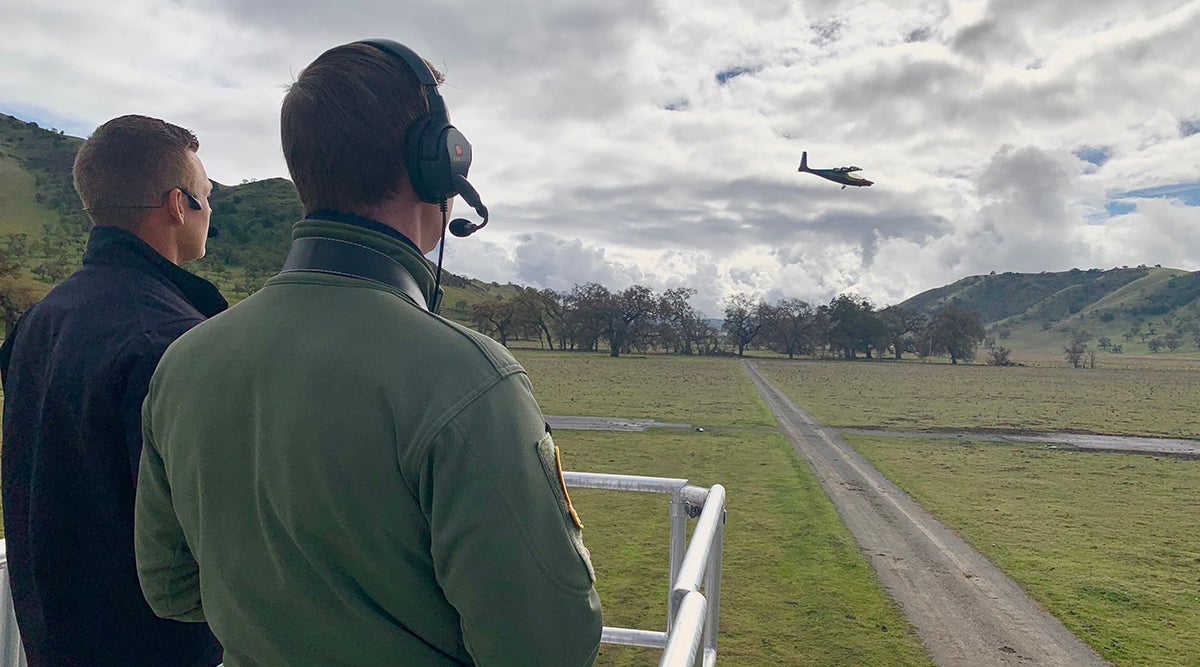A U.S. Air Force pilot recently successfully flew an electric vertical takeoff and landing (eVTOL) aircraft during remote pilot in control (rPIC) training, marking the first government flight of a remotely piloted eVTOL, the Air Force said.
“A crucial thing that the RC controller allows you to do that a completely unmanned or a completely ground-controlled station based approach does not [gain] that intuition about the flight characteristics of the aircraft that are so important [for operational employment].”
Air Force Reserve pilot Capt. Terrence McKenna in a statement
The training exercise, held last month in Palo Alto, California, represented a collaboration between Kitty Hawk and the Air Force’s AFWERX’s Agility Prime eVTOL acceleration program. It was aimed at evaluating and improving training for the aircraft maker’s Heaviside eVTOL aircraft, the Air Force said.
During the week-long training, Air Force Reserve pilot Capt. Terrence McKenna, who is a pilot with the 370th Flight Test Squadron and the Test and Experimentation Lead for Agility Prime, underwent a familiarization course for Kitty Hawk‘s Heaviside eVTOL.
Heaviside features a maximum takeoff weight of 880 pounds, or about 176 pounds per passenger. The aircraft is able to travel at about 180 mph, is estimated to be about 100 times quieter than a typical helicopter and has demonstrated a range of about 100 miles on a single charge, the service said.
As part of the training, McKenna used a Buddy Box system, or a secondary remote controller wired to a primary controller, which is a training feature of the Heaviside.
Operating as an external pilot allows pilots to get a feel for aircraft capability, McKenna said.
“It’s a different paradigm for operating the aircraft,” McKenna said in a statement. “A crucial thing that the RC controller allows you to do that a completely unmanned or a completely ground-controlled station based approach does not [gain] that intuition about the flight characteristics of the aircraft that are so important [for operational employment].”
While Heaviside is primarily being developed for a commercial air taxi service market, the eVTOL aircraft offers potential utility for government use, such as for transporting injured personnel, evacuations from hostile territories, or first air or cargo delivery, the Air Force said.
Last May, Kitty Hawk was granted airworthiness approval by Air Force, which opened doors to further flight testing opportunities through the Agility Prime program. The aircraft manufacturer conducted its first beyond visual line of sight (BVLOS) flight in November near Wright-Patterson Air Force Base in Ohio.
“The Air Force has been a strong partner for us as we bring eVTOLs closer to being ready for human flight,” Sebastian Thrun, Kitty Hawk chief executive officer, said in a statement. “In Ohio, we hit an important milestone making us the first [urban air mobility] provider to fly a remotely piloted aircraft BVLOS in a non-restricted air space.”
In addition to the partnership with Kitty Hawk, Agility Prime has existing agreements with other eVTOL manufacturers, including Joby Aviation, Electra, and Archer Aviation.
Other recent AFWERX projects include Hermeus’s Mach 5 Quarterhorse program with a jointly funded, $60 million contract to develop a hypersonic jet that could serve multiple roles, including military executive transport, such as Air Force One. A similar contract was awarded to Boom Supersonic to further development of the company’s commercial supersonic aircraft program that is also a potential platform for the service.
